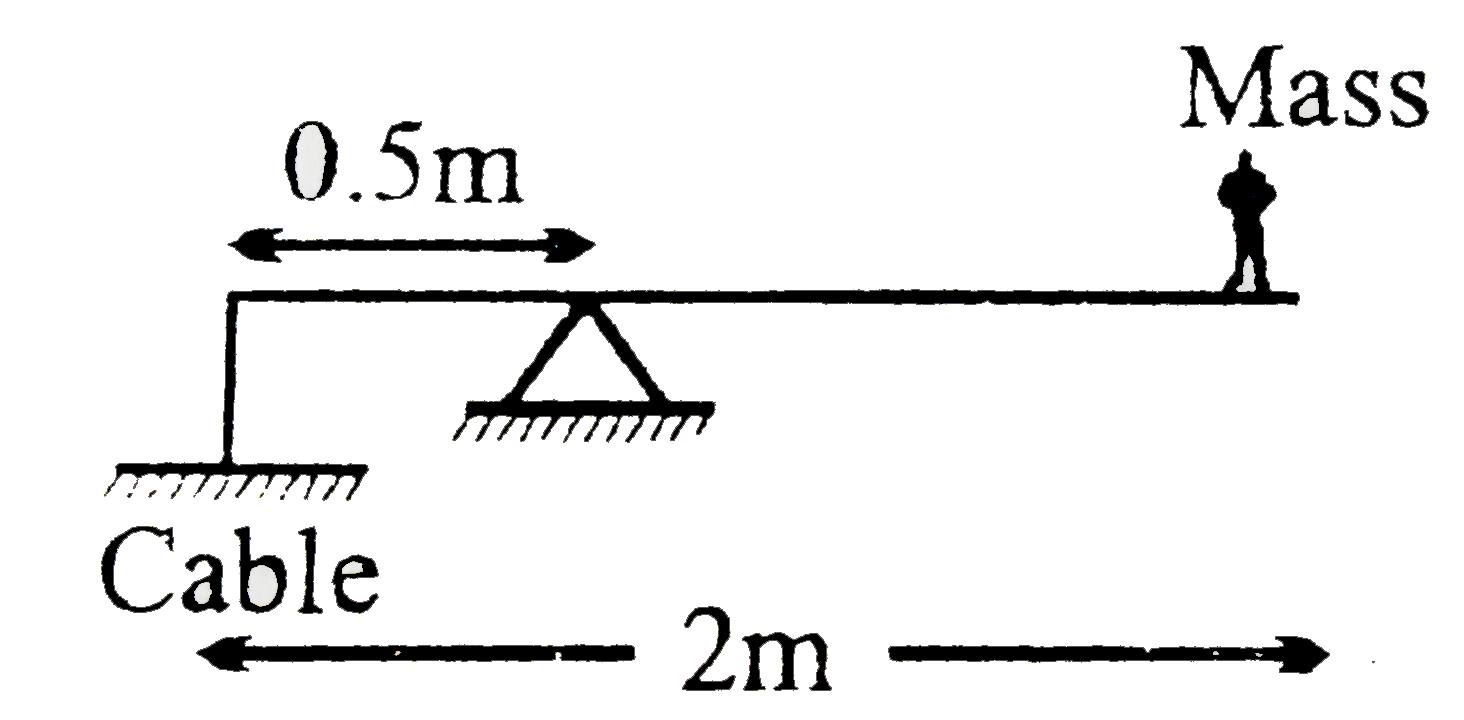Object A, of mass 5 kg and object B, of mass 10kg, hand from light threads at the ends of a uniform bar length 18 and mass 15kg. The masses A and B are at distances 6 and 12, respectively, below the bar. Find the center of mass of this system.

The center of mass of the bar alone is at its midpoint (because it is uniform), so we can treat the total mass of the bar as being concentrated at its midpoint. Constructing a coordinate system with this point as the origin, we now have three objects: one with mass 5 at (-9,-6), one with mass 10 at (9,-12) and one with mass 15 at (0,0).
We figure out the x- and y-coordinate o the center of mass separately.
xcm=m1x1+m2x2+m3x3m1+m2+m3=(5)(−9)+(10)(9)+(15)(0)5+10+15=4530=1.5 ltbgt ycm=m1y1+m2y2+m3y3m1+m2+m3=(5)(−6)+(10)(−12)+(15)(0)5+10+15=−15030=5
Therefore, the center of mass is at
(xcm,ycm)=(1,5,−5)
Relative to the midpoint of the bar.
Topper's Solved these Questions
Similar Questions
The total mass of two object of mass 2130 kg and 16 tones is
View SolutionA man of mass 85kg stands on one end of a uniform board of length 2m and mass 15kg. The other end is tied to the floor by a steel cable, and the board is supported from below just 0.5 m from the cable end (see figure).

View Solution
Knowledge Check
A and B are two objects with mass 6 kg and 34 kg respectively. Then
AA has more inertia than BBB has more inertia than ACA and B both have same inertiaDNone of the above is trueA and B are two objects with masses 10 kg and 40 kg respectively. Then
AA has more inertia than BBB has more inertia than ACA and B have the same inertiaDNeither A nor B has any inertiaP and Q are two objects with masses 5 kg and 30 kg respectively. Then
AP has more inertia than QBQ has move inertia than pCP and Q have the same inertiaDneighter P nor Q has any inertia
Two objects of masses 1kg and 2kg separated by a distance of 1.2m are rotating about their centre of mass. Find the moment of inertia of the system
View SolutionA boy of mass 50kg is standing at one end of a boat of length 9m and mass 400kg. He runs to the other end. The distance through which the centre of mass of the boat boy system moves is
View SolutionA steel bar AB of mass 10 kg and length 1 m is kept horizontal by supporting it at the two ends. Two weights of 4 kg and 6 kg are suspended from points of the bar at distances 30 cm and 80 cm respectively from the end A. The reaction at the end A is
View SolutionTwo objects A and B of masses 2 kg and 20 kg are dropped from a height of 10 m simultaneously. Then
View SolutionWhat will happen is two objects A and B of masses 30 kg and 120 kg are dropped from a height of 20m simultaneously.
View Solution
